November 11, 2018
Butterflies are here for a reason. Like flowers, chocolate and fruit? They are all here due to pollinating insects like beautiful butterflies.
Butterflies are a welcome addition to any garden, and they are easy to attract no matter if your garden is a sprawling rural property or a tiny city deck or communal courtyard.
While our studio was on Tamborine Mountain we planted four Richmond Birdwing butterfly vines and were rewarded with never-ending sightings of these beautiful endangered butterflies visiting our garden, along with many, many others.
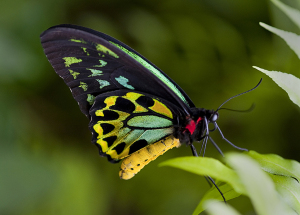 Birdwing butterfly
Birdwing butterfly
Image courtesy Danielle Lancaster
Plants that attract butterflies and butterfly friendly-gardening tips
If you want to attract butterflies to your garden, as they provide a natural beautiful subject for you to photograph (how is discussed later) here are a few tips on plants to consider planting to attract these flighty yet attractive critters.
Butterflies like full sun, so position your butterfly-attracting plants where they receive a good amount of sunlight. Butterflies also don’t like too much wind, they are special and delicate.
Borage and fennel are two herbs that butterflies adore. The list of natives is endless…. which makes your planting choices open for colour and variety. If you are buying plants choose wisely as this can become very expensive. Acacia, Callistemon and grevillea species are all popular butterfly species.
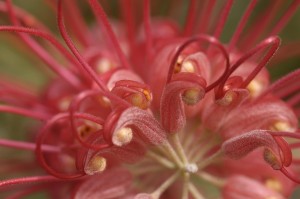 Many Australian natives attract butterflies to your garden
Many Australian natives attract butterflies to your garden
Image courtesy Danielle Lancaster
Limit your use of pesticides as butterflies like a pest-free garden, as we said, they are delicate subjects.
Butterflies see on the UV spectrum and love bright colours. They not only need a variety of colours but nectars as well. Planting loads of butterfly-attracting plants especially in the hot pink, white and red regions should soon have you seeing these beautiful insects in your garden. Nectar and colour are the two keys to attarcting butterflies.
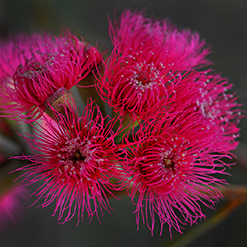 Butterflies love full sun and colour
Butterflies love full sun and colour
Image courtesy Danielle Lancaster
Some say a shallow dish of muddy water is beneficial as butterflies like to sit in the water and suck the moisture from the soil, I am trying this now with the new Bluedog studio plantings and will let you know if it works.
Butterfly photography tips
1. Keep the shutter speed high
I aim for 4000 second if I can though will go lower if they are relaxing and feeding.
2. Know your point of focus and depth of field (DOF)
This is critical for what you want to get into focus. If you are working with a dedicated macro lens your DOF extends each way equally, if not it is one third: two thirds with the one-third being in front.
3. Cut the crap
Only photograph what you need – cut all the outside crap you can without interfering on the insect’s daily chores and distributing him or her.
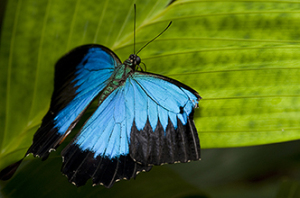 A Ulyusses butterfly – Kuranda
A Ulyusses butterfly – Kuranda
Image courtesy Danielle Lancaster
4. Do I need a macro lens?
The short answer is no, though a macro will allow you to get a larger image and one that is life-size. Any other general lens will give you a close but not true macro image. This image below was shot on a 70-300mm stock lens.
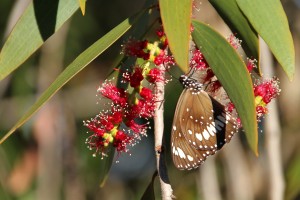 A butterfly feeding in outback Queensland
A butterfly feeding in outback Queensland
Image courtesy Danielle Lancaster
5. Source out butterfly-attracting gardens and national parks
Before your travel, do a google search for parks and gardens – even many zoos have butterfly gardens. Some butterflies are only seasonal unless bred and kept in captivity while many are only attracted at certain times of the year to a plant.
Two of our favourite sanctuaries in Australia are
The Australian Butterfly Sanctuary in Kuranda, Queensland
Butterfly House – Melbourne Zoo
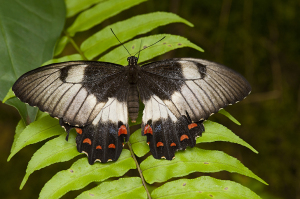 Butterflies come in a range of colours and patterns
Butterflies come in a range of colours and patterns
Image courtesy Danielle Lancaster
Did you know:
A butterfly is an insect. In fact, a flying one. Like all insects, they have six jointed legs, three body parts, a pair of antennae, compound eyes, and an exoskeleton. The three body parts are the head, thorax (the chest), and abdomen (the tail end). The butterfly’s body is covered by tiny sensory hairs.
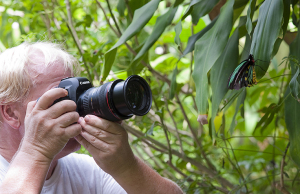 Photographing a butterfly in Kuranda, Queensland
Photographing a butterfly in Kuranda, Queensland
Image courtesy Danielle Lancaster


